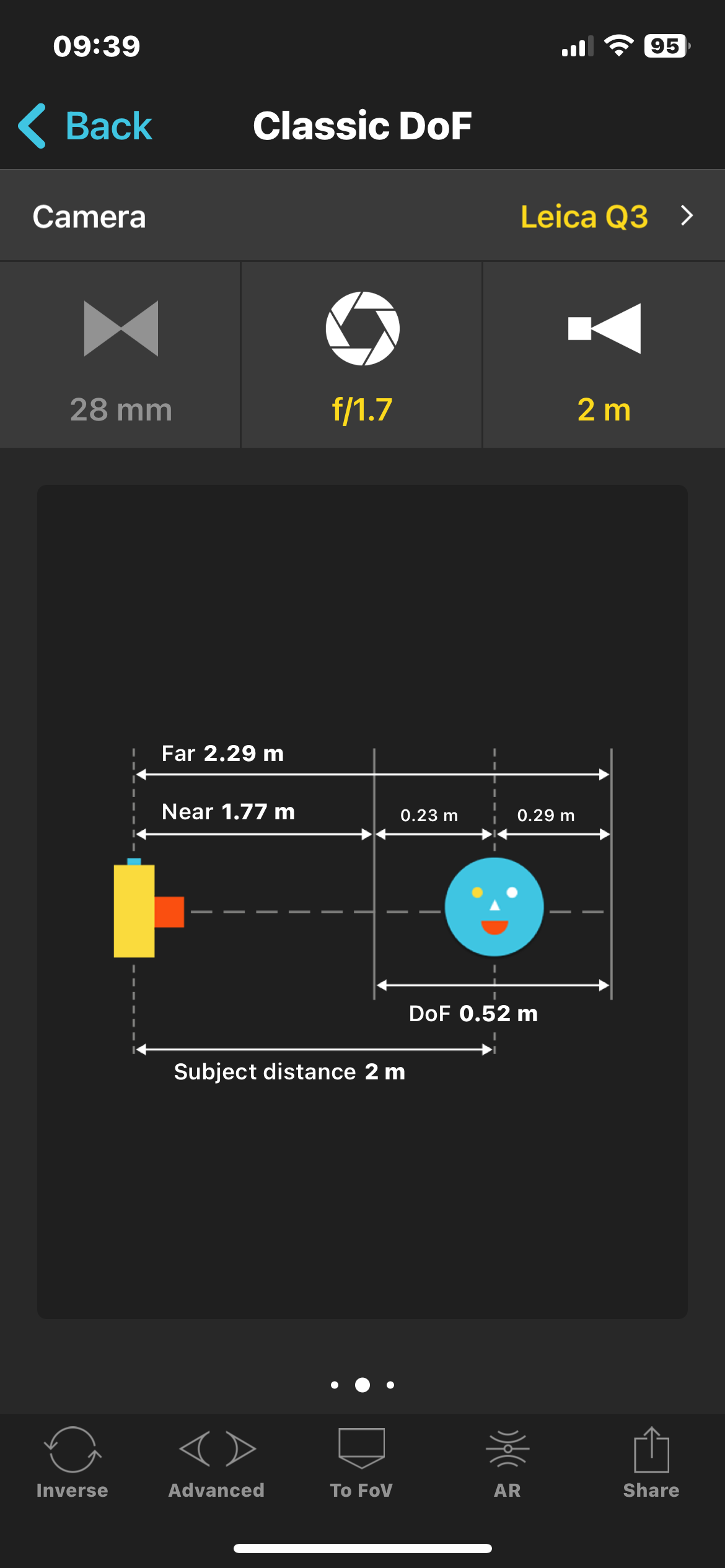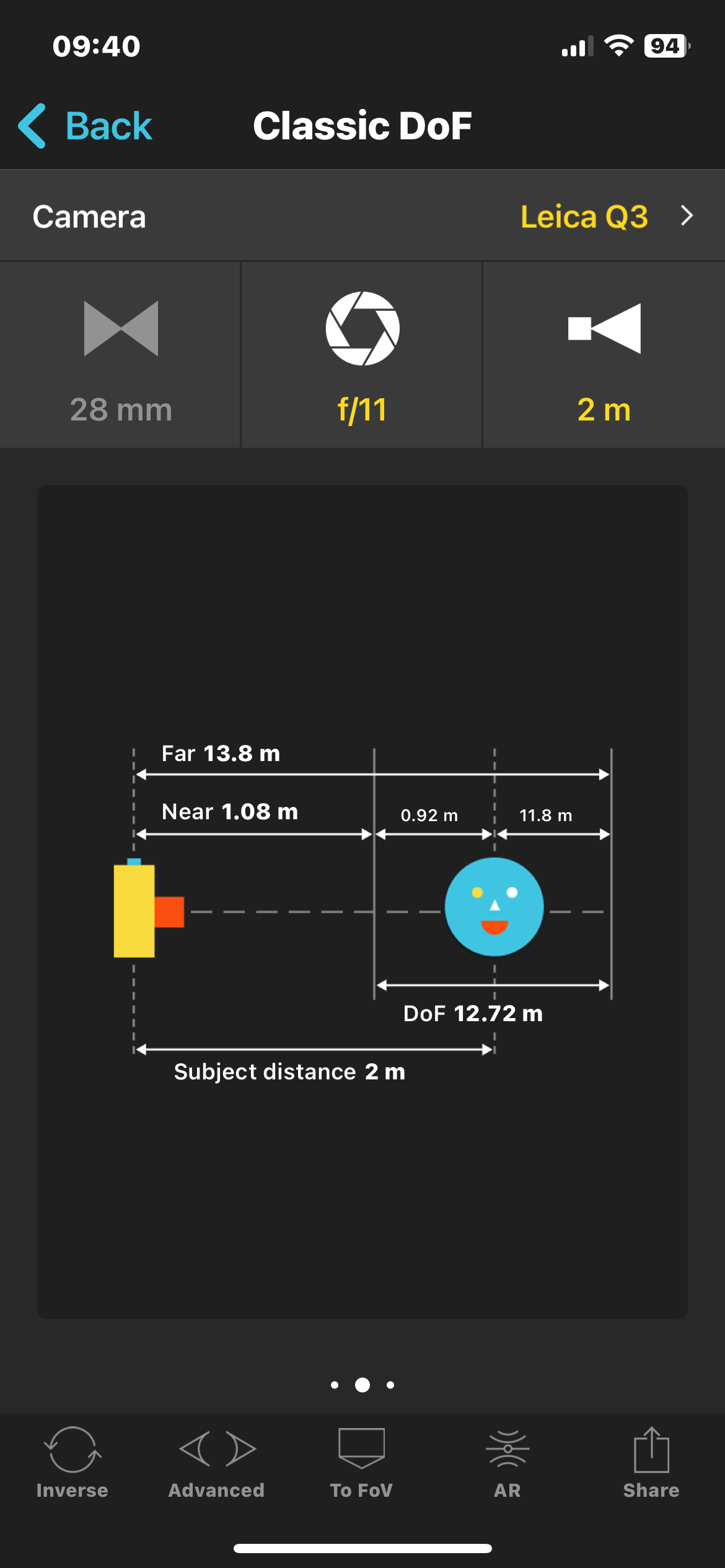Zone focusing
Photography is somewhat like fashion, what goes out of fashion surely become trendy again in a few years. Zone focusing was a basic everyday thing in photography a few decades ago. But after autofocus slowly, then rapidly began to get better and better, almost everyone forgot that we have an amazing tool in our arsenal, we just don't use it anymore. As cameras and lenses evolved, autofocus become so fast and reliable that the vast majority of photographers didn't bother investigating some ancient techniques. We lost basic lens' functions that might help us manually focus properly.
A few terms to understand Zone focusing better
The first one is a term I'm sure everyone heard several times: Depth of field. Probably everyone also know that this gives us an idea how our photograph will look. If we use shallow Depth of Field, the background will be blurry, if on the other hand we use aperture f/11 or f/16, almost everything is going to be sharp on the photo. For easier understanding we can view depth of field as our zone.
Example with f/1.7:
PhotoPills app
Let's say that our subject is exactly 2m away from us. With the Leica Q3 at f/1.7 focusing on the subject our Depth of Field will be 0.52m. This why we call it shallow Depth of Field. Only 23cm before 2m, and 29cm after 2m is going to be sharp. Everything else will be out of focus.
Example with f/11:
PhotoPills app
Our subject stay at 2m, but this time our aperture is at f/11. Focusing on the subject this time gives us 12.72m Depth of Field. Really huge compared to the previous example.
Acceptable sharpness
Let me introduce you another term: Acceptable sharpness. If you focus your lens on one point, that is going to be absolutely sharp. The lens can only be focused on a single point. With using small apertures (f8-f11-f16) we still have the focus point absolutely sharp, while because of the Depth of Field we see the rest of the image sharp. See the above example with aperture f/11. we have a Depth of Field of more than 12 meters. Of course not everything is going to be pin sharp throughout this 12 meters, but everything is going to be acceptably sharp to our eyes. This is the reason zone focusing works amazingly well.
Zone focusing
And now we are ready to use zone focus. The best is if you have a manual or semi-manual lens that has proper markings on the lens barrel. Current modern lenses sadly almost completely lost this capability as they are focus by wire and missing any proper markings on the lens barrel. Let's take a look at how this is working in practice:
On the Leica Q3 if I set the aperture to f/11 and set the infinity sign to the f/11 mark on the lens, everything from about 1.5 meters to infinity will be acceptably sharp, around 2 meters being the sharpest point. It is that easy, you just have to follow the markings if you use any other aperture. As you go on and use smaller apertures, your zone get bigger and bigger. At f/5.6 it is about 2 meters, at f/11 is more than 12 meters, at f/16 almost everything is going to be acceptably sharp on the photo.
In my opinion zone focusing works well with smaller apertures, I find it really hard to use it with consistent great results under f/5.6. Maybe it is the lack of practice, but the Depth of Field is drastically lower under let's say f/8.
Pixel peeping
I've heard it many times that zone focusing is a myth, because if you zoom into 100-200% the majority of the photo is not sharp. Yes, this is true, at that level of magnification you'll consider that blurry. But, no one else will see the photo at that magnification and you have to be aware of the fact that the lens is only capable of focusing on one point. If you use any autofocus lens the very same will happen. Zoom into 200% and picture won't be pin sharp across the whole frame. The rest of the image will be acceptably sharp, not pin sharp. Like on a beautiful landscape scene not every detail is razor sharp. And there's no need for that. If it's acceptably sharp, your eyes will see that the photo is sharp indeed.
Real World usage
I love to use zone focusing on the street, especially on sunny days when I can use smaller apertures. It works even faster than any autofocus system because essentially you don't have to focus. If you are in the zone, you just need to compose and take the shot. There's no faster way to achieve this. In practice I might adjust my focus a bit. I know if I get closer to someone I just turn the focus ring to be at the 2 meter mark, or a bit further than that. Or if I see that my composition is wider and a bit further away then I turn the focus ring so the infinity sign almost touching the middle mark. With this method your hit rate will be much higher I found. While the method of zone focusing is simple and easy to understand, you still need time to get used to it and use it with confidence. From the start it is almost a daily practice. But with a little time you'll get it and will have many sharp photos and only a few that miss focus so you might have to delete it. How is it faster than a blazing fast autofocus system? Because if you prefocus, meaning you adjust the lens for zone focusing, the only variable left is light and composition. You can react so quickly that no autofocus system in the World can keep up with it. It eliminates the need to know and select which autofocus mode you'd want to select and use and the necessity for the camera to actually focus the lens in the moment. You eliminate all this, hence the whole process become a much quicker and simpler experience.
Shall we ditch all autofocus systems?
Of course not. That would be just silly. Autofocus can be amazing in situations. But I argue that in street photography, zone focusing has a place, and it can be much faster than any autofocus system. There are some genres where autofocus makes the photographer's life much much easier. If you think about sports photography, wedding photography for example. Of course you can still use manual focus even if you're a sports of wedding photographer, but it is definitely much harder to achieve the same result.




